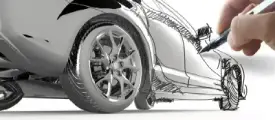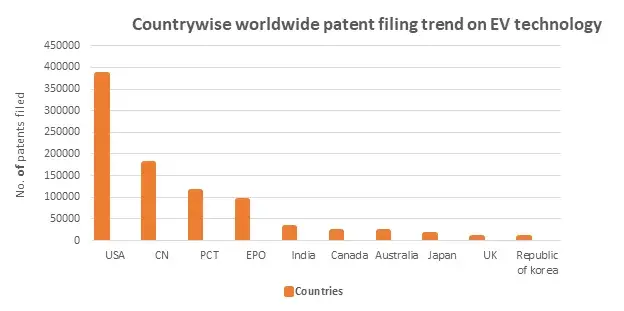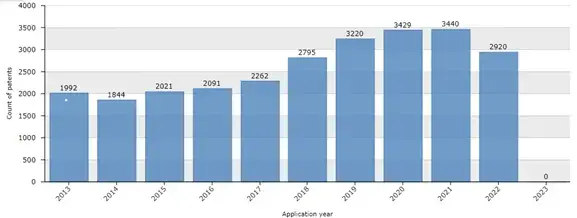By Renu Bala Rampal and Swaraj Raghuwanshi
Introduction
In the world plagued with climate and other environmental issues, Electric vehicles have emerged as the most lucrative alternative to conventional petrol/diesel vehicles. With the rising demand for clean transportation technology, hike in prices of petrol and diesel and government’s need to curb crude imports, India’s electric vehicle (EV) industry has observed a boom in the past two years. In the current times, customers are vividly opting for EVs as they offer advantageous features like low operating costs, avoiding the use of biofuels, ease of charging with home charging stations, attractive design and performance etc. Innovators, therefore, sense this potential growth in this industry and are thinking differently to bring further advanced and innovative features to EVs in order to sustain customer’s need and interest.
Current Research and Innovation
Top innovators are trying to innovate advanced battery power packs, powertrain/drivetrain, efficient charging systems, better framework, advanced data analysis tools and modern and aesthetic designs. The issues addressed by several R&Ds recently involves maintenance and replacement of batteries, Inefficient energy storage and harvesting, Inefficient thermal management, battery charging, battery positioning, Inefficient chassis control system, starting ability and drivability, propulsion and ignition, noise and gear shift operation, complicated arrangement and packaging of drivetrain, robust framework of EVs, advanced data analysis tools for distance and road conditions, road history generating unit for user convenience, monitoring devices for monitoring real time failures etc.
Key Players
Traditional Indian companies like Mahindra and Mahindra, Hero Electric, Bajaj, Tata Motors, TVS along with foreign companies like Honda Motor, Suzuki, Toyota etc. are leading in EV manufacturing market but these are facing a tough competition as several startups such as Ather Energy, Tork Motors, Ola Electric etc. embark their journey in the EV market prioritizing capabilities involving software technologies such as AI and IoT.
Government Initiatives
The Indian government has gotten involved in the cause, focusing on upholding its obligations under the international climate change agreements as well as keeping up with global trends and activities. In light of this, one of the government’s key priorities has been the adoption of EVs. The Faster Adoption and Manufacturing of Hybrid and Electric Vehicles (FAME) program was introduced in Phase 1 in April 2015, with Phase 2 starting in April 2019 and having a budget of Rs10,000 (about $1.25 billion) over five years. This policy applies to battery-operated EVs, plug-in hybrids, strong hybrids, and all other electric and hybrid vehicles.
Because batteries are one of the most crucial components of an EV, on May 12, 2021, the government also approved the Product Linked Incentive (PLI) plan for the production of advanced chemical cell batteries. PLI programs offer advantages for Indian manufacturers. This program will cost Rs18,100 (or around $2.27 billion) over five years. Numerous local and international corporations have started establishing battery manufacturing projects in India after the launch of the aforementioned scheme.
India’s adoption of EVs has undoubtedly benefited from government encouragement and technological advancement, as seen by the threefold increase in EV sales between FY 2020–21 and FY 2021–22. According to the Ministry of Heavy Industries, 30% of the cars and 80% of the two-wheelers on Indian roads would be electric vehicles by 2030. Several Indian towns have begun introducing electric buses as part of the FAME program for public transportation. Over 14 of India’s 28 states are close to finalizing EV laws that complement the country’s electric mobility objectives, closely following the Union Government. Government incentives and the resulting increase in EV adoption in India have resulted in increasing IP protection in this technology sector, as evidenced by the nation’s patent applications.
Patent Filing Trend
According to the worldwide trend of patent filing for EV technology, USA and China were the world leaders with maximum filing with a total filing of 3,84,840 and 1,78,300 respectively between year 2016 to 2022. ( Source; PATENTSCOPE database)
Patent filing trend related to EV technology is observed to be increasing from 2016 till 2022 with a rise 2091 patents filed in 2016 to around 3440 patents filed in 2021, which suggest that there has been robust research and development on EV technology. Filing data reveals that Honda motors was one of the top patent filers in India followed by LG Chem and Toyota. Published patent applications in the field of EVs and allied technology have been steadily rising since 2017 as shown in the graph below.
Conclusion
India’s move towards electrification serves as a broad move towards digitization and overall sustainability. Developing recycling batteries, virtual connectivity, advanced data analysis tools provided through artificial intelligence and Internet-of-Things, efficient thermal management, efficient and smart portable charging stations, better propulsion and ignition, efficient noise and gear shift operation, road history generating unit for user convenience, monitoring devices for monitoring real time failures etc. can help provide better user experience while maximizing EV’s performance and efficiency.




